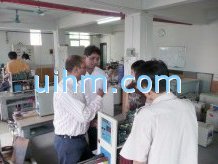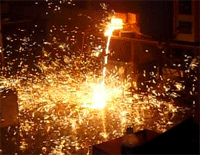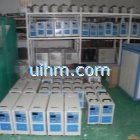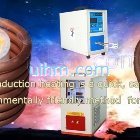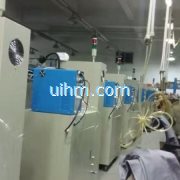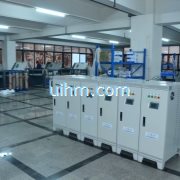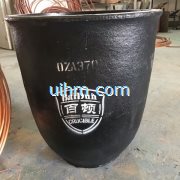Induction heating principle and its application in the construction machinery
2013/1/5 From: Local Views
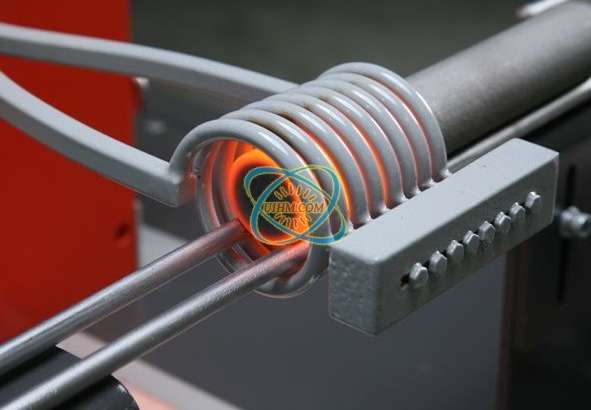
Induction Heating is the process of heating condutive material or magnetic condutive material (usually a metal, but also including graphite, molten salts, oxides, carbides, plasma etc.) by electromagnetic induction method, the changing magnetic fields generate changing electric fields (usually Eddy Current) in the object, and then the object generate Joule Heat by the induced electric fields by itself.
An important feature of the induction heating is that the heat is generated inside the object itself, instead of by an external heat source via heat conduction, as the Eddy Current is shorted which will cause large current inside the object , then the generated Joule Heat (I2*R*t) will be huge, thus objects can be heated very rapidly.
In addition there need not be any external contact, which can be important where pollution is an issue. Induction heating is used in many industrial processes, such as heat treatment in metallurgy (including brazing, welding, soldering, jointing, quenching, hardening, annealing, tempering, melting, forging, etc.) , crystal growth and zone refining used in the semiconductor industry, and to melt refractory metals which require very high temperatures.
The basic components of the induction heating system including an induction coil, the AC power supply and the workpiece. Depending on the object to be heated, the coil can be made into different shapes.
The coil and the power supply is connected to the power supply for the coil provides an alternating current, an alternating current flowing through the coil to generate an alternating magnetic field through the workpiece, the magnetic field so that the workpiece to produce eddy current heating. Induction heating is accompanied by the birth of the automotive and tractor industries and start-ups. Because it has the advantages of high heating efficiency, speed, good controllability and easy to realize mechanization and automation.
Currently used most effective heat treatment process, with the variety of applications of the following: surface hardening, through the thermal quenching, tempering and stress relief (low temperature), annealing and normalizing (high temperature), the weld annealing, powdered metal sintering, etc.. Has been widely used in the smelting, casting, tube bending, hot forging, welding and surface heat treatment industry. In the casting, is the rapid development of duplex melting process, namely the use of the IF furnace insulation modified, ductile iron or alloy steel precision casting; in forging dare heated quickly through the hot hot forging, not only to reduce the loss of oxide and greatly increases the life of the forging die, the material utilization up to 85, forging the surface roughness can be less than 50 μm, foreign on the one hand, dedicated to developed high-power solid-state high-frequency power; in welding, hardening, on the one hand, efforts complete processing system in the development of highly automated heat treatment. Our current Each year, about 10 million tons castings, the foundry industry is still cupola melting generally cast iron casting mainly smaller tonnage, lead to large fluctuations in temperature and composition, the rejection rate. Better the rejection rate of the foundry industry is also 6 ~ 15, and the general foundry scrap rate is as high as 30.

